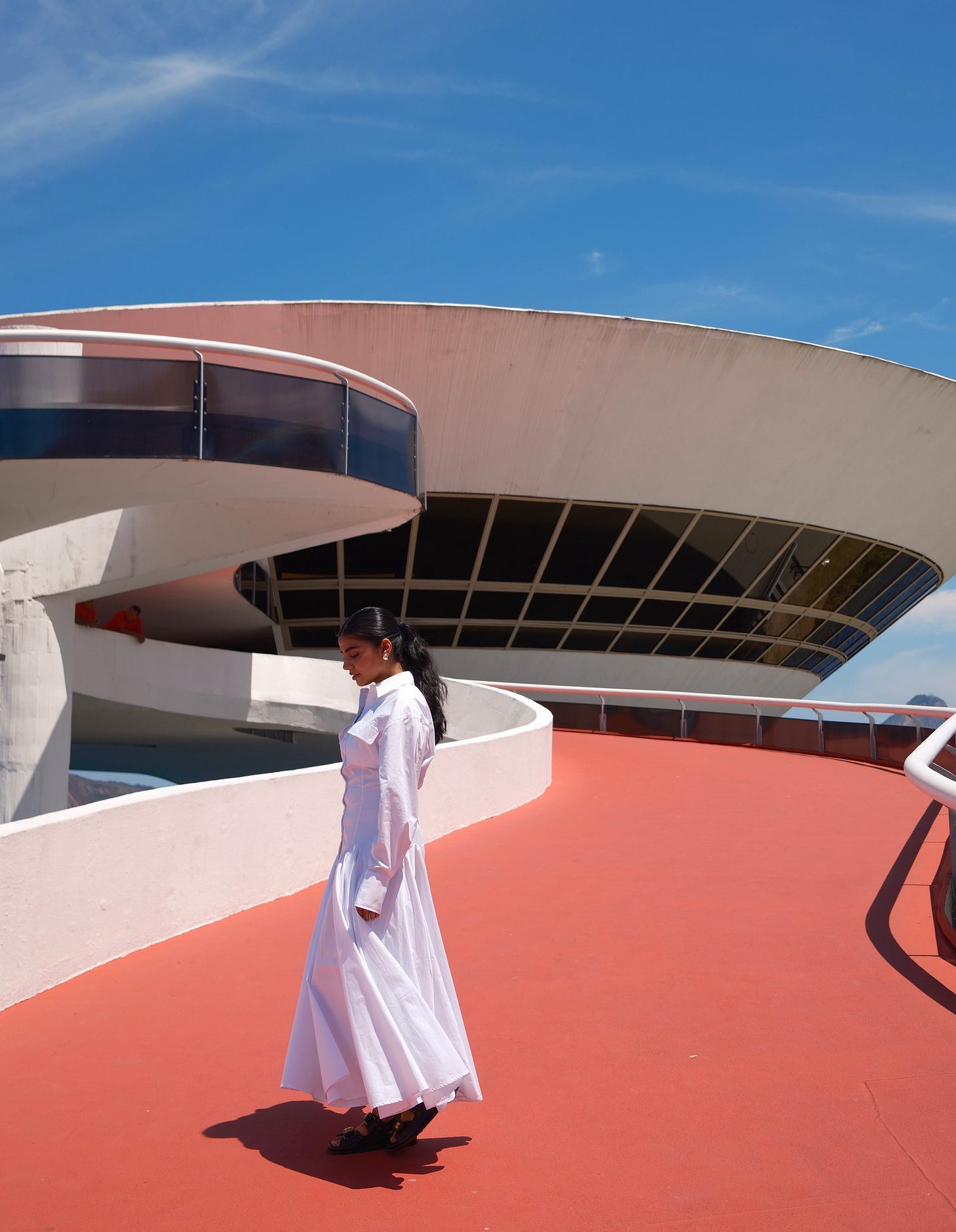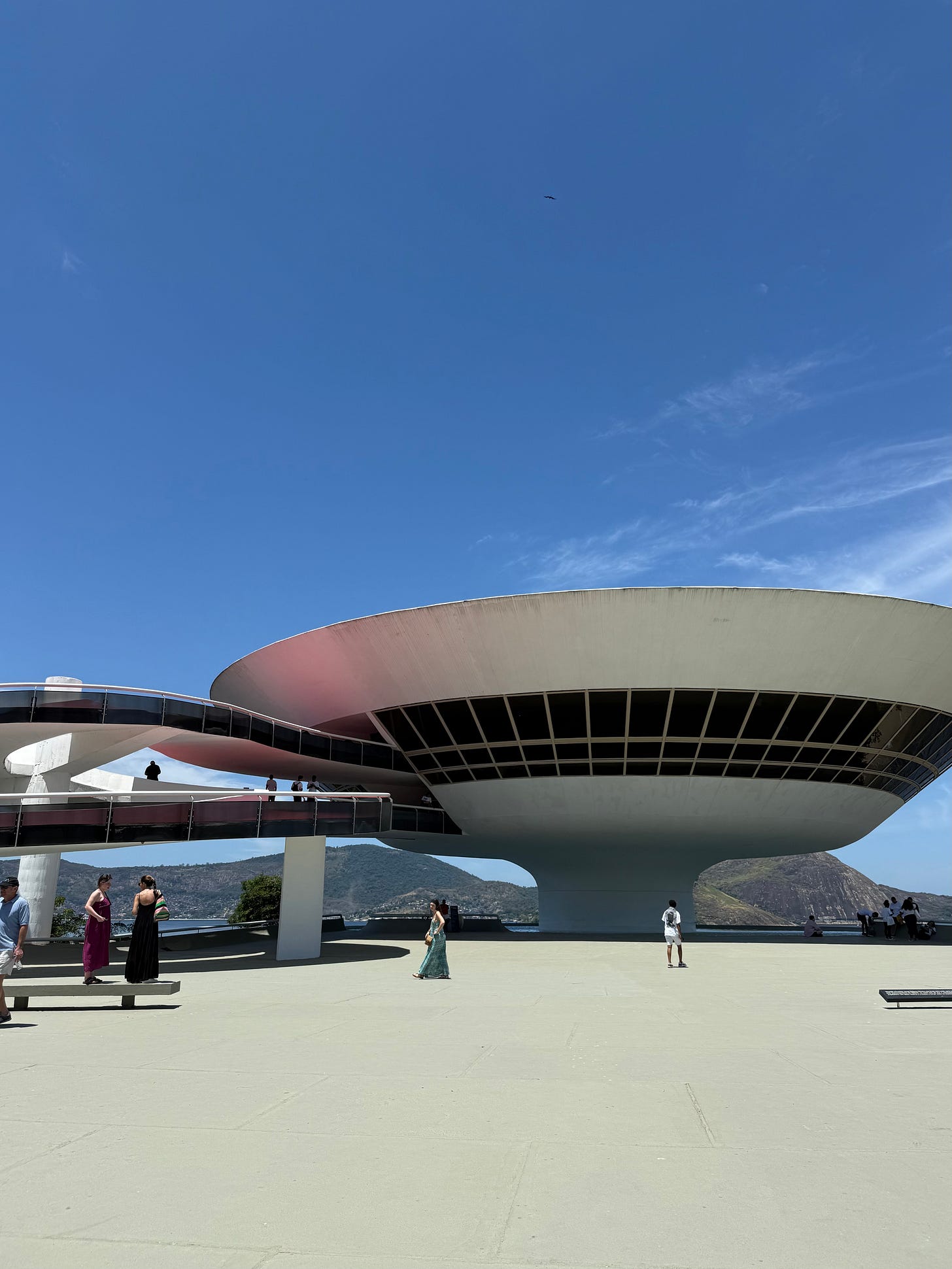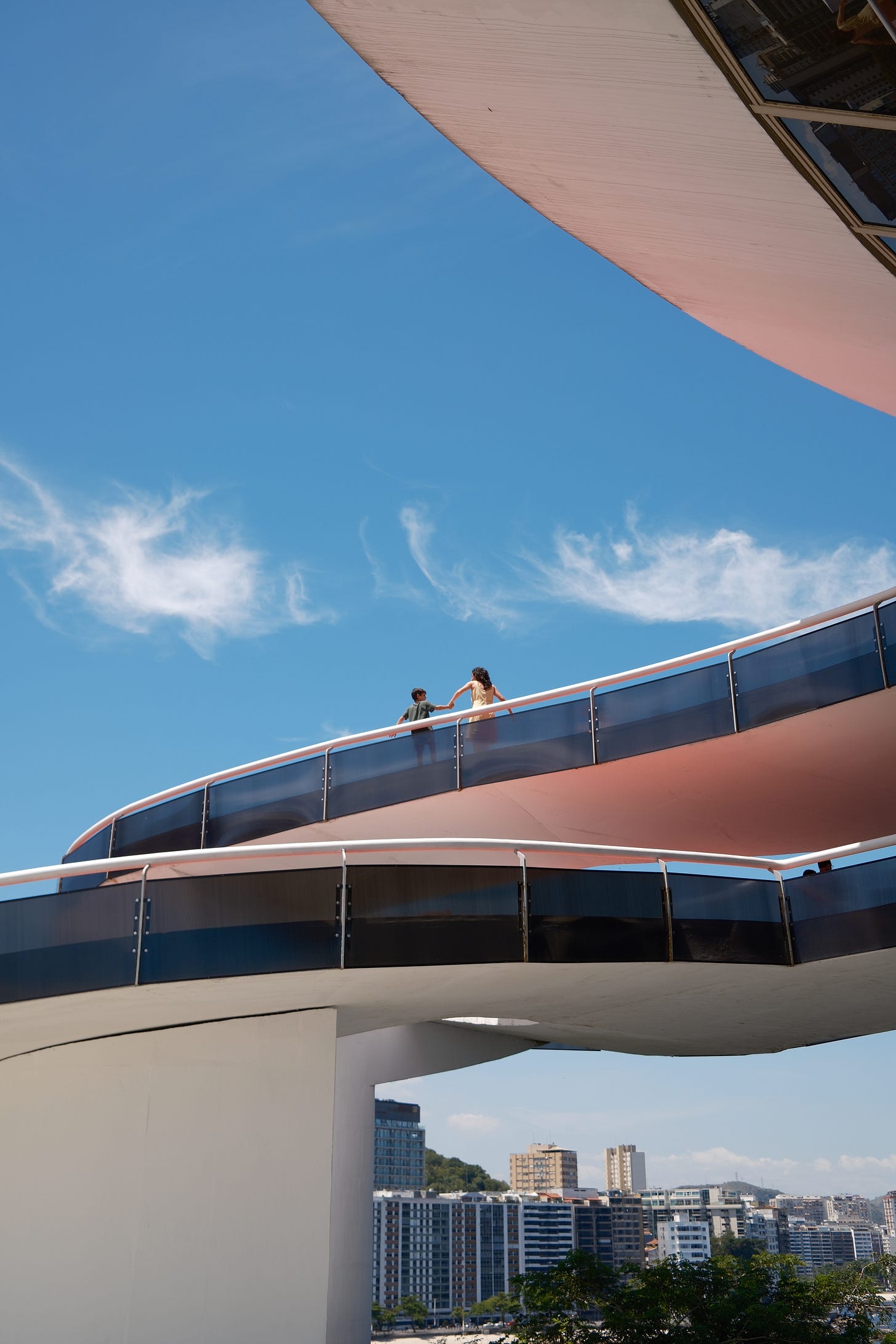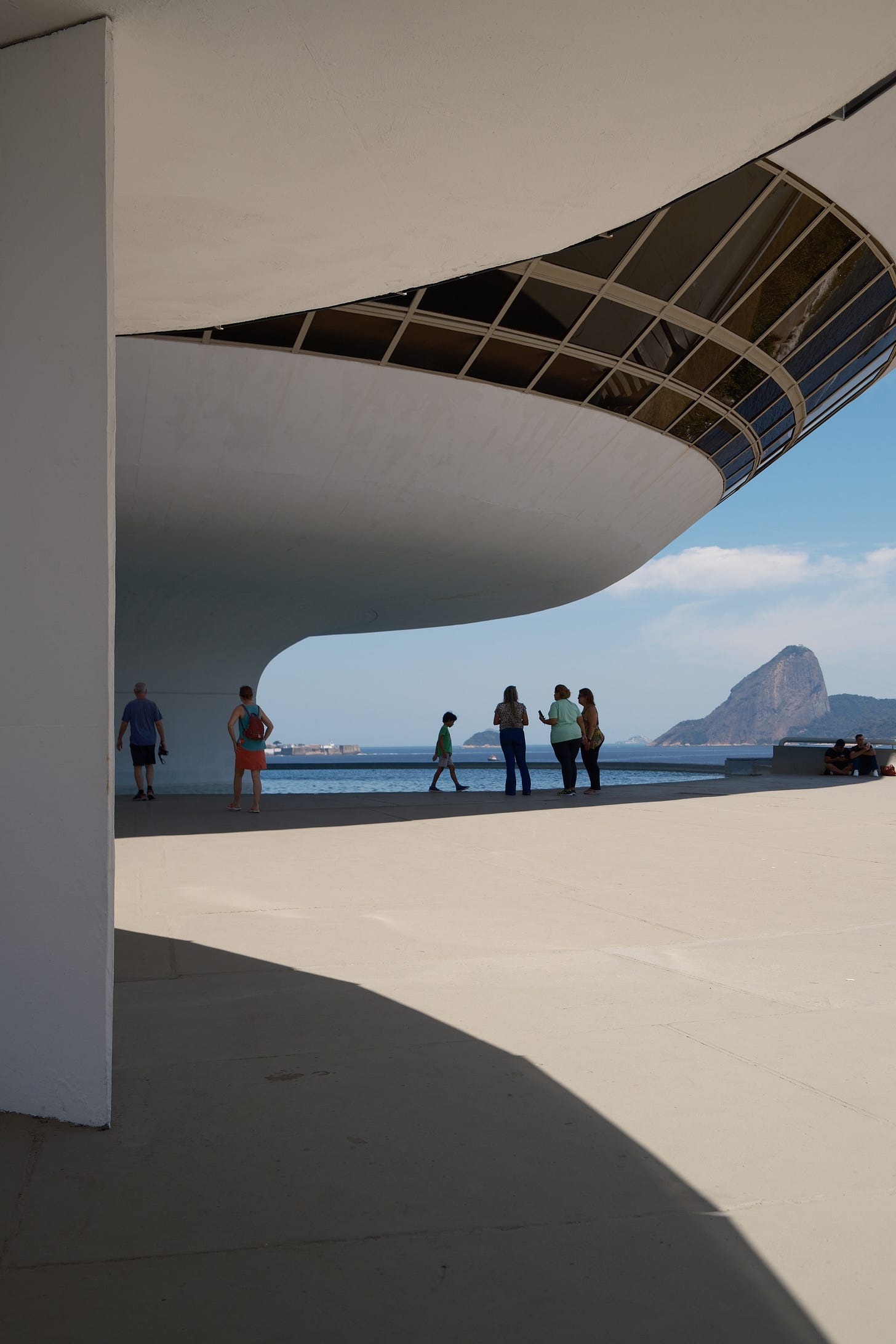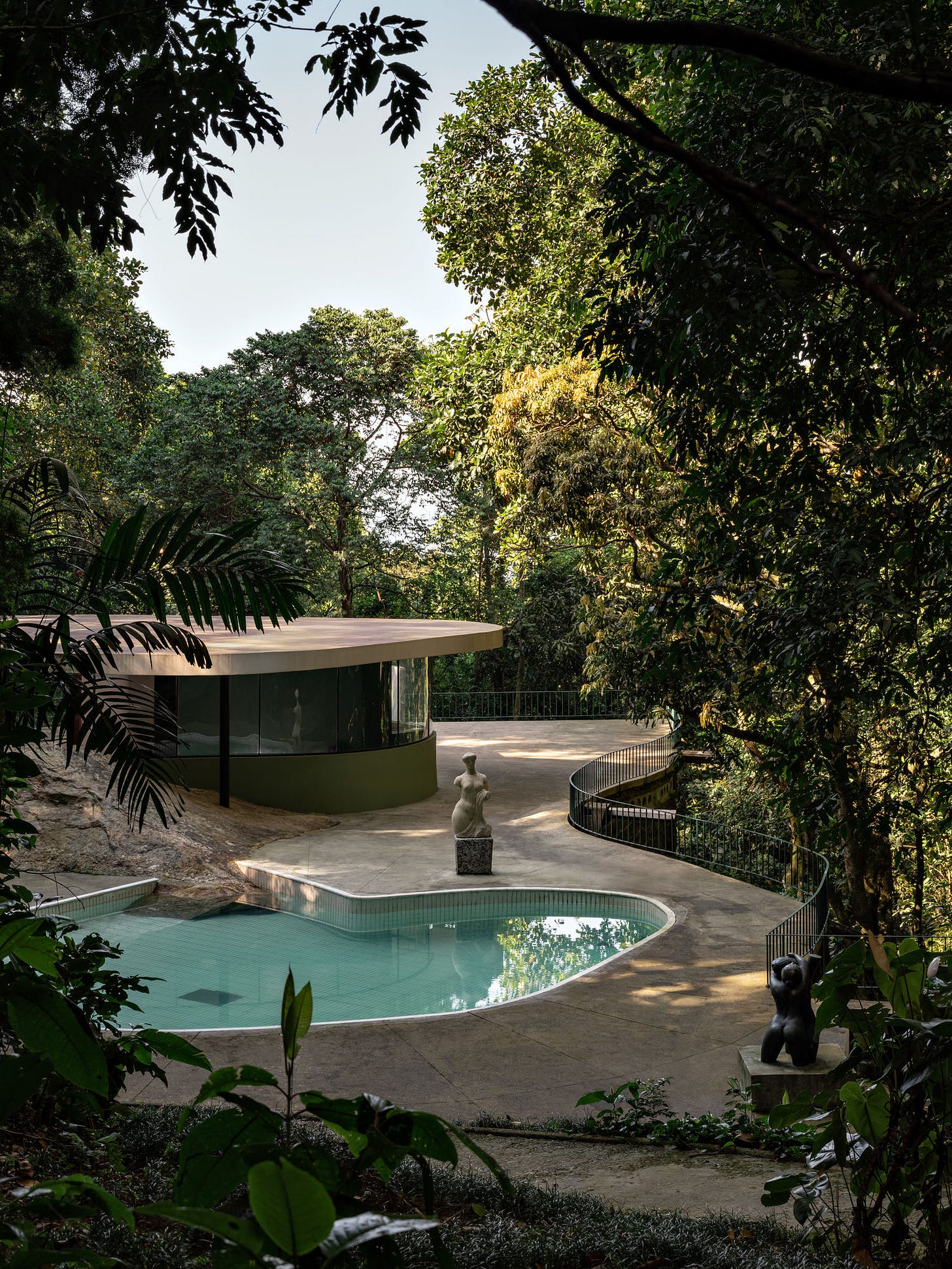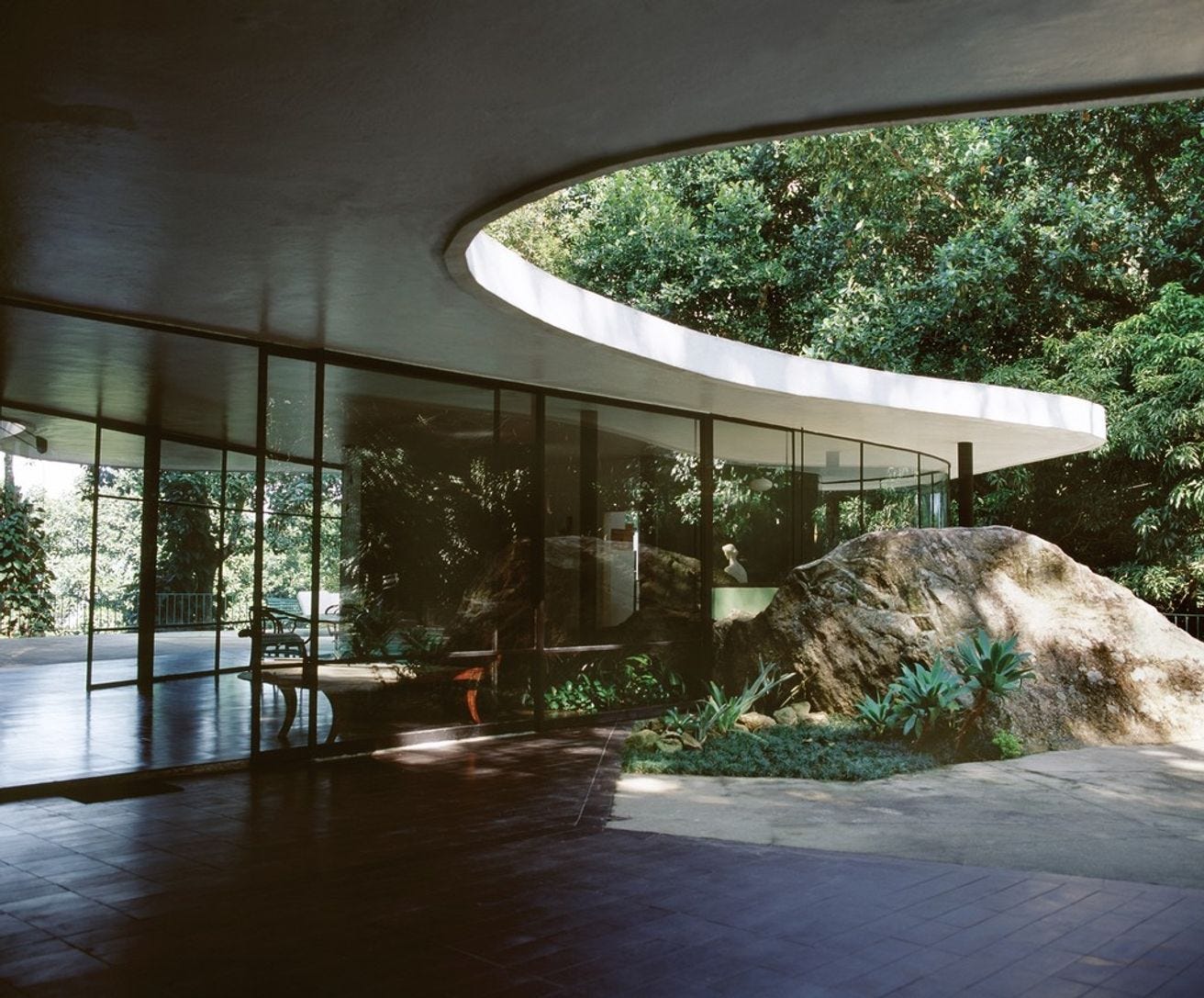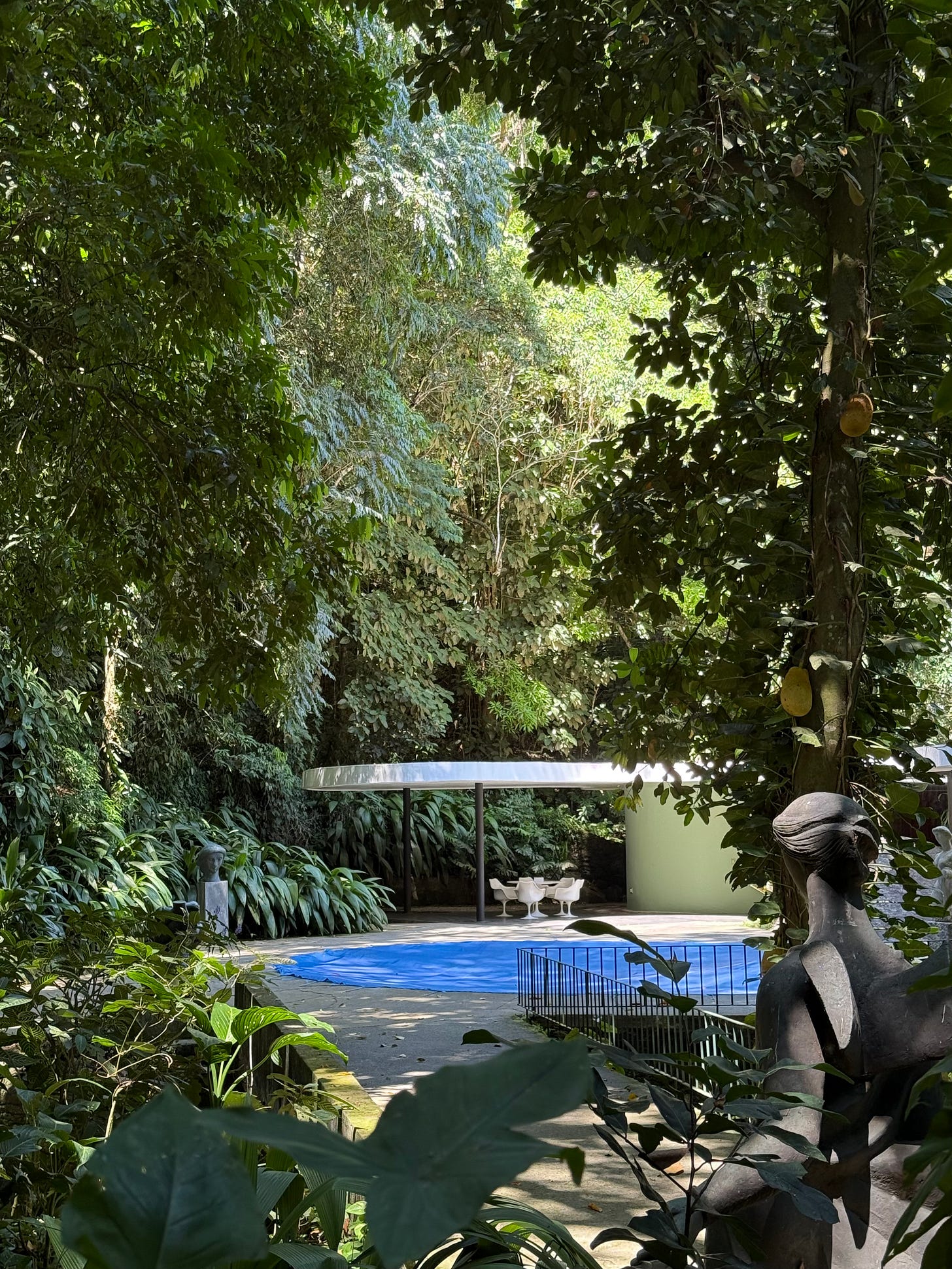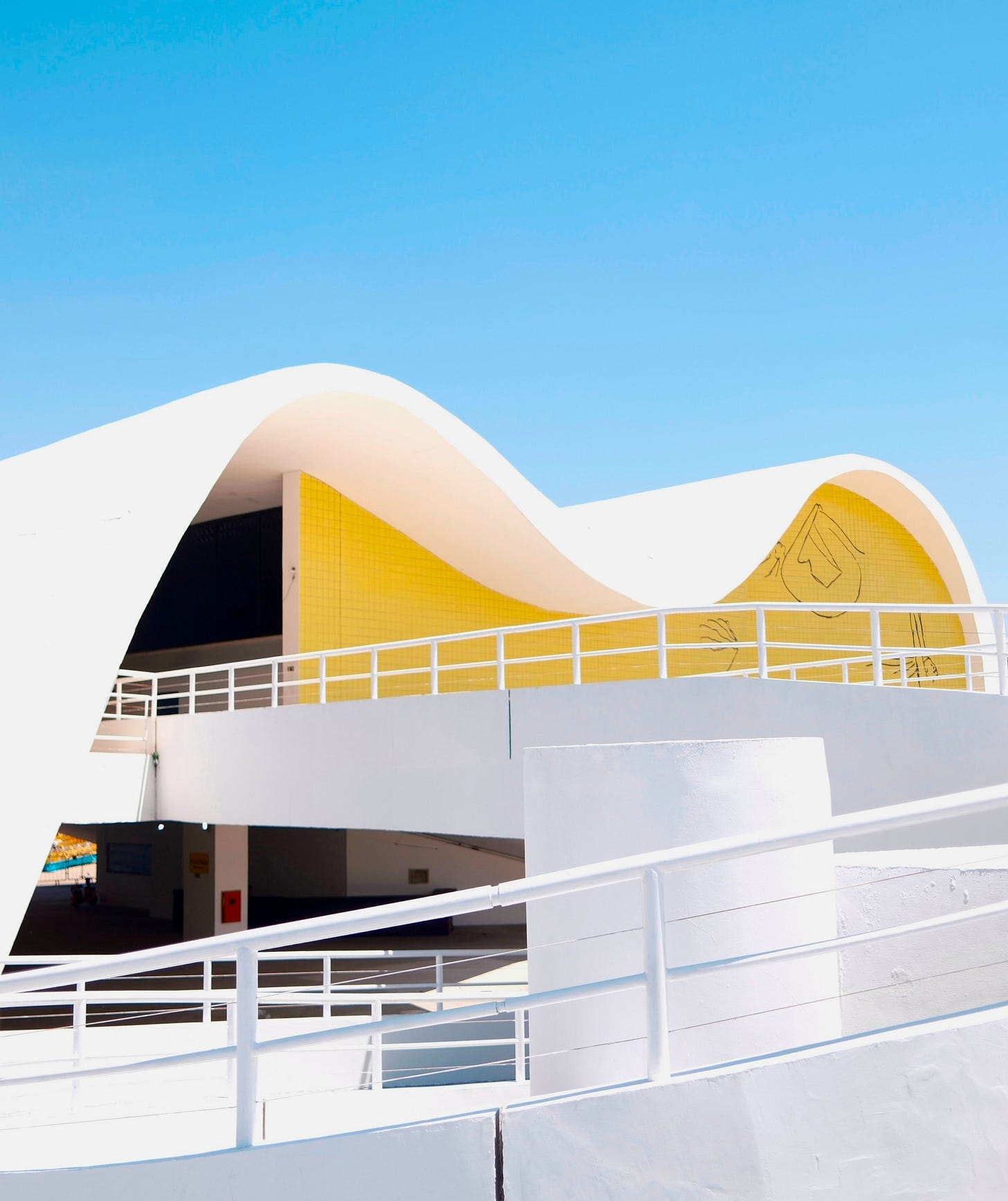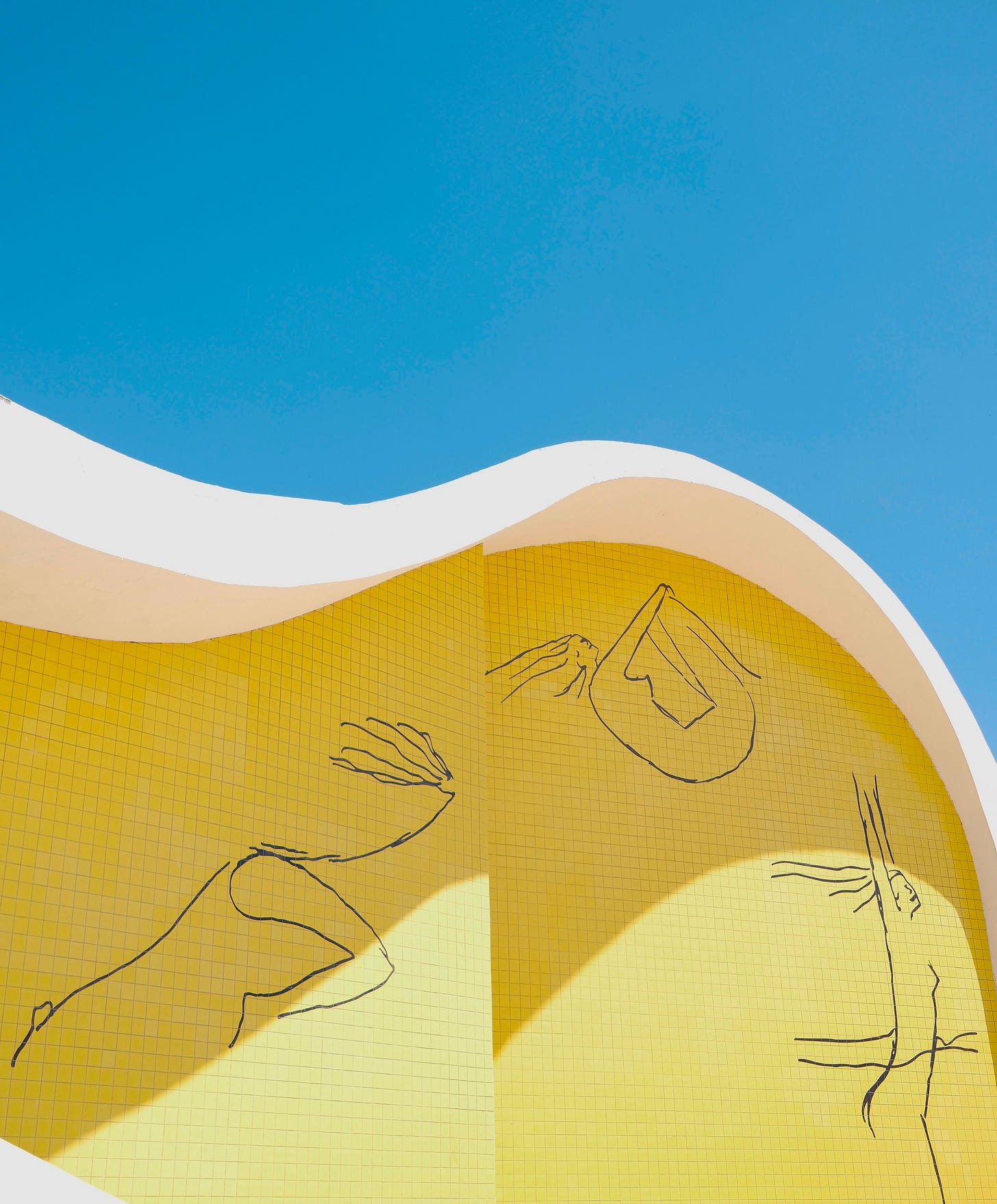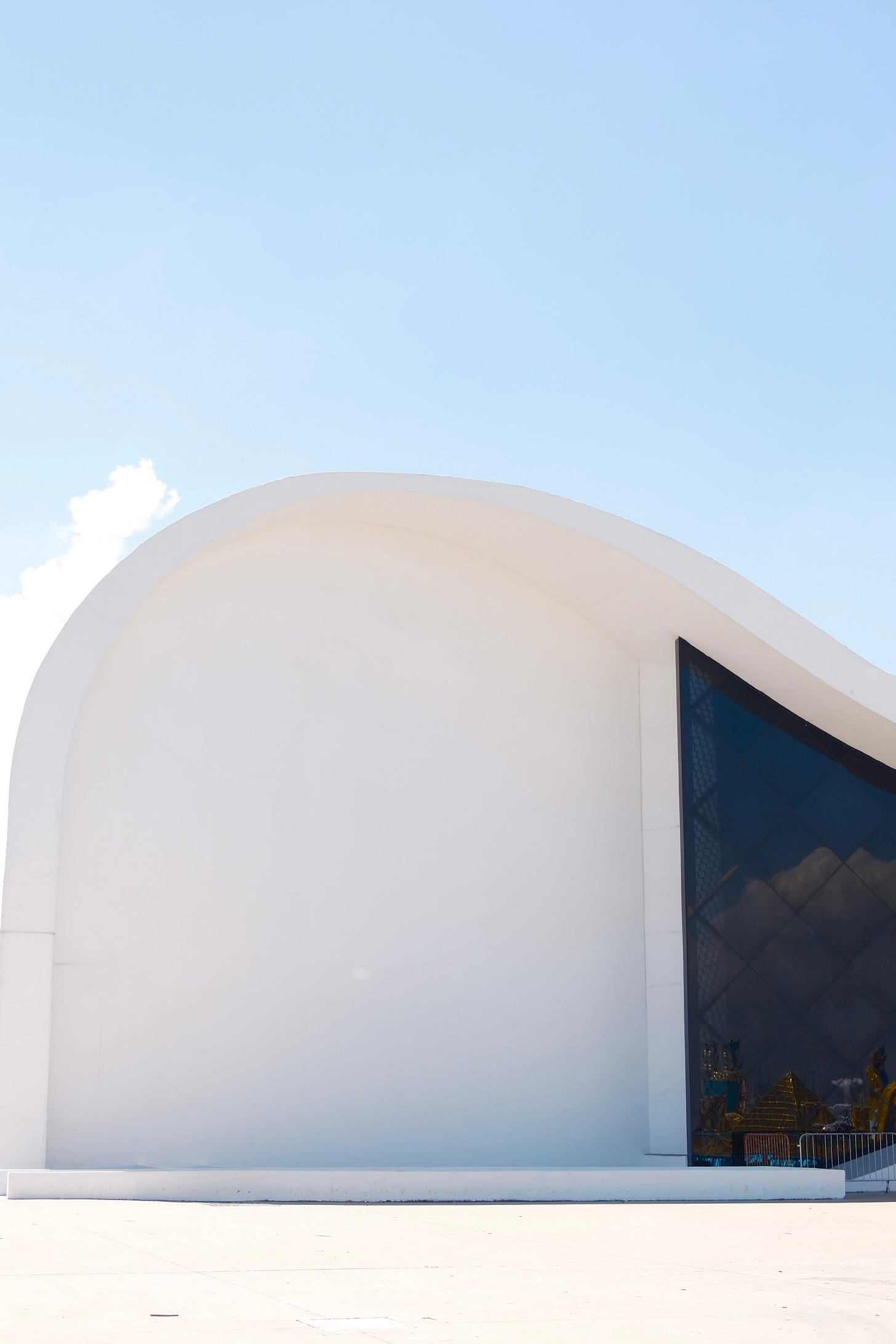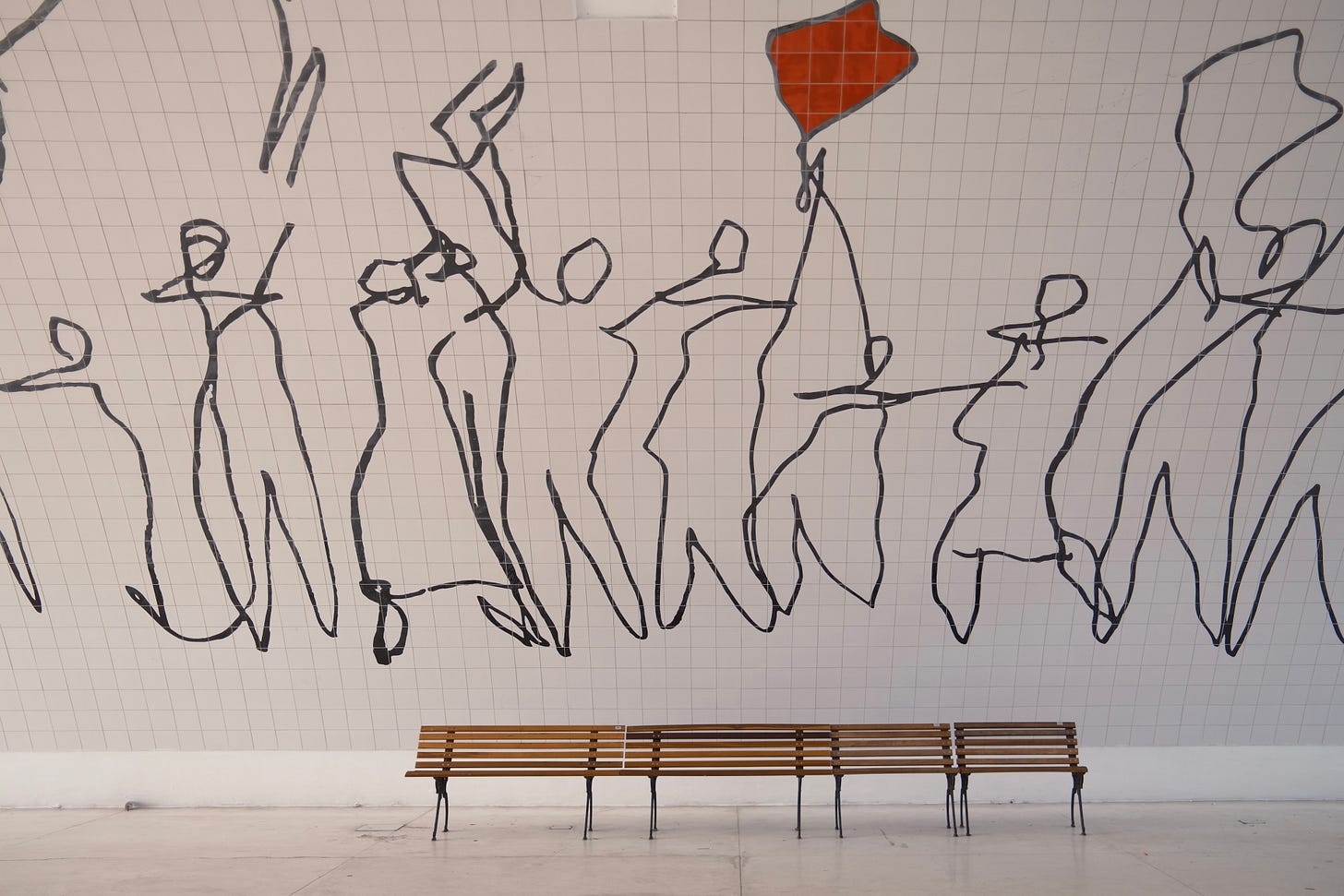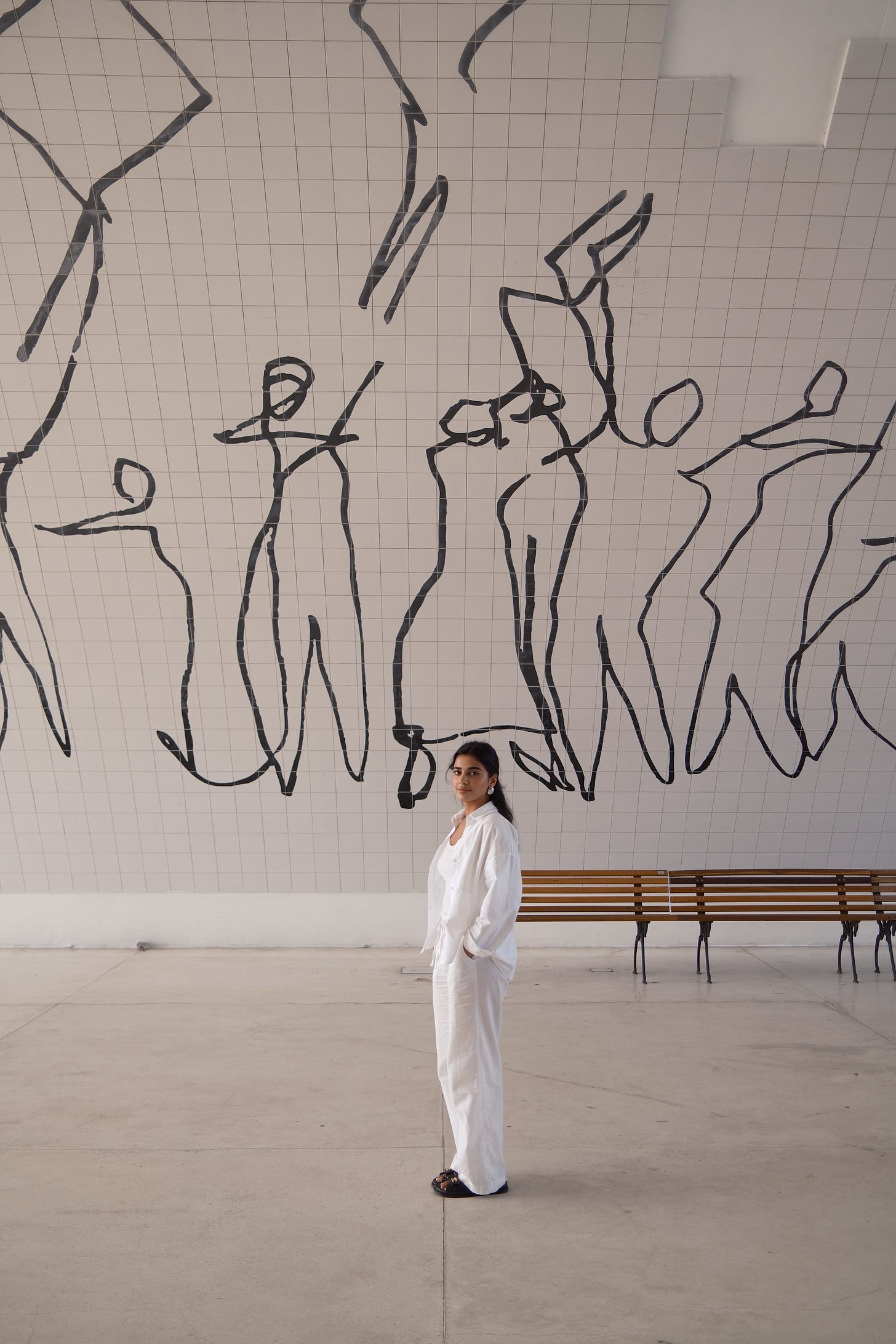Field Notes: Exploring Niemeyer in Niterói and Rio
Tracing the curves of a modernist legacy, from UFO-shaped museums to sweeping theatres.
I first discovered Oscar Niemeyer in undergrad, when the world of architecture was just a fascination. At the time, I often resonated with certain architects because of their design style or their most famous works, but my interest in Niemeyer was different. He was one of the first architects I valued for his principles and not his creations. I became transfixed by his unwavering commitment to his ideals, his belief in equality, and his ability to merge physical poetry with politics. A lifelong socialist and later communist who saw modern architecture as a means to serve the people. Niemeyer wanted to create accessible, inspiring public spaces, not just buildings for the wealthy elite. Something I connect with so deeply in my own urban planning work.
A few years ago, I was completely burnt out by my first job right out of planning school. Working on master-planned projects and development applications, I felt like I had completely lost sight of why I first pursued this career. It was the people that inspired me, like Niemeyer, that ultimately led me to make a change. To work for the greater good for all and not the benefit of some.
When planning our trip to Brazil, I knew Rio would be our first destination in the country. However, when we return I will be planning a visit to Brasilia, the capital city designed by Niemeyer and urban planner Lúcio Costa. Envisioned as a futuristic utopia exhibiting Brazil’s progress and modernity, the city was ultimately unsuccessful in achieving its original vision. However, to this day it remains a UNESCO World Heritage site, and features some very bold and beautiful Niemeyer buildings including the Cathedral of Brasília and the Palácio da Alvorada.
Below I have included the must-visit sites in Rio and Niterói for anyone looking to explore and experience Niemeyer's work.
I am not attracted to straight angles or to the straight line, hard and inflexible, created by man. I am attracted to free-flowing, sensual curves. The curves I find in the mountains of my country, in the sinuous course of its rivers, in the waves of the ocean, and on the body of the beloved woman.
— Oscar Niemeyer
Museu de Arte Contemporânea de Niterói
Mirante da Boa Viagem, s/nº - Boa Viagem, Niterói
Open every day (except Mondays): 10 am - 6 pm
R$12 Entrance Fee
Located in neighbouring Niteroi, the museum sits on the rocks along the bay with the perfect views of Rio. Perhaps one of Niemeyer’s most iconic creations, the building, often compared to a spaceship/UFO was actually designed to look like a blooming flower. Niemeyer set out to make a beautiful public space where art, particularly the contemporary variety, could be accessible to everyone.
Tickets are R$12 for most which comes to about $2 USD. Half price for students, university students, and adults over 60. Free for children under 7, residents of Niterói, public school students, and visitors who arrive by bicycle.
Though the museum is smaller than I had imagined, it sits in a large open space. A plaza with a pool of water under the suspended dome. We arrived at the museum around noon which meant the sun was relentlessly beating down. After we finished touring inside, we spent a considerable amount of time in the plaza taking in the views and enjoying the breeze. The ramp that leads up to the museum and the dome itself created large shadows which many were leisurely using to cool off. Young children running around, tourists, families, couples and even a duo of furries were seen using the space exactly as Niemeyer intended.
When visiting, I would recommend scheduling 1-2 hours to give yourself enough time to enjoy all the details.
Casa das Canoas
Estrada da Canoa, 2310 - São Conrado
CLOSED
Named Casa das Canoas or House of the Canoes, the building was created by Niemeyer himself as the residence for him and his family. Designed in 1951, the architect sought to create a house in harmony with nature rather than thrust upon it. Instead of clearing the site he chose in the Tijuca Rainforest, Niemeyer worked with the trees and large boulder to incorporate them into the design of the home. The floor-to-ceiling curved glass walls aim to minimize the barrier between the indoors and outdoors, maintaining an organic fluidity. Niemeyer lived in the home until he had to flee Brazil due to the military takeover in 1965. Now the Oscar Niemeyer Foundation is responsible for the property. The building is currently facing repairs and construction so tours have been halted. Passing through the area, I was able to catch glimpses of the house from the steep road it is located on.
Caminho Niemeyer
Avenida Jornalista Rogério Coelho Neto, s/nº, Centro – Niterói
Open Daily, from 9 am to 6 pm
Free Entrance
Caminho Niemeyer or Niemeyer Path is a complex with buildings promoting art and culture, all designed by Oscar Niemeyer.
It includes the Teatro Popular, a memorial to Roberto Silveira and The Museum of Science and Creativity/House of Knowledge - I was told it is now used as the Foundation’s office. The beautiful theatre, designed to look like a wave, includes a mural that reflects his social beliefs, left intentionally unfinished to symbolize that the struggle for equality and social justice is never complete.
As you can see Oscar Niemeyer had a profound impact on me and I feel lucky to experience firsthand the spaces he created, where aesthetics and ideology are inseparable, and where architecture doesn’t just dare to dream of a better world - it pushes to create it.



